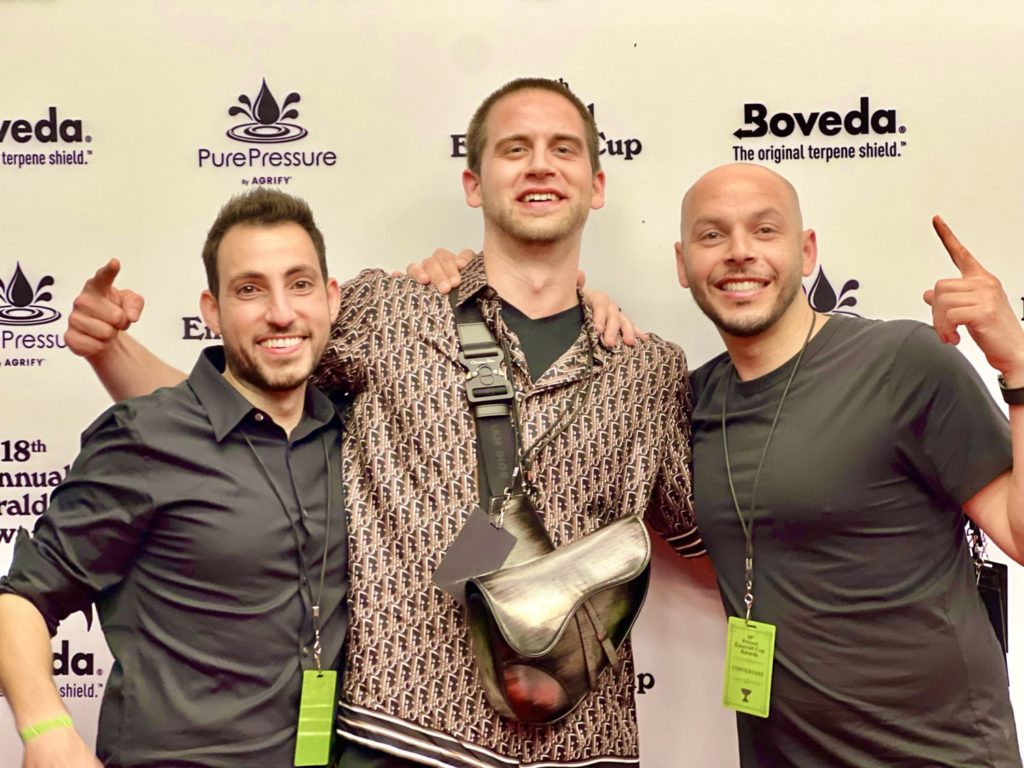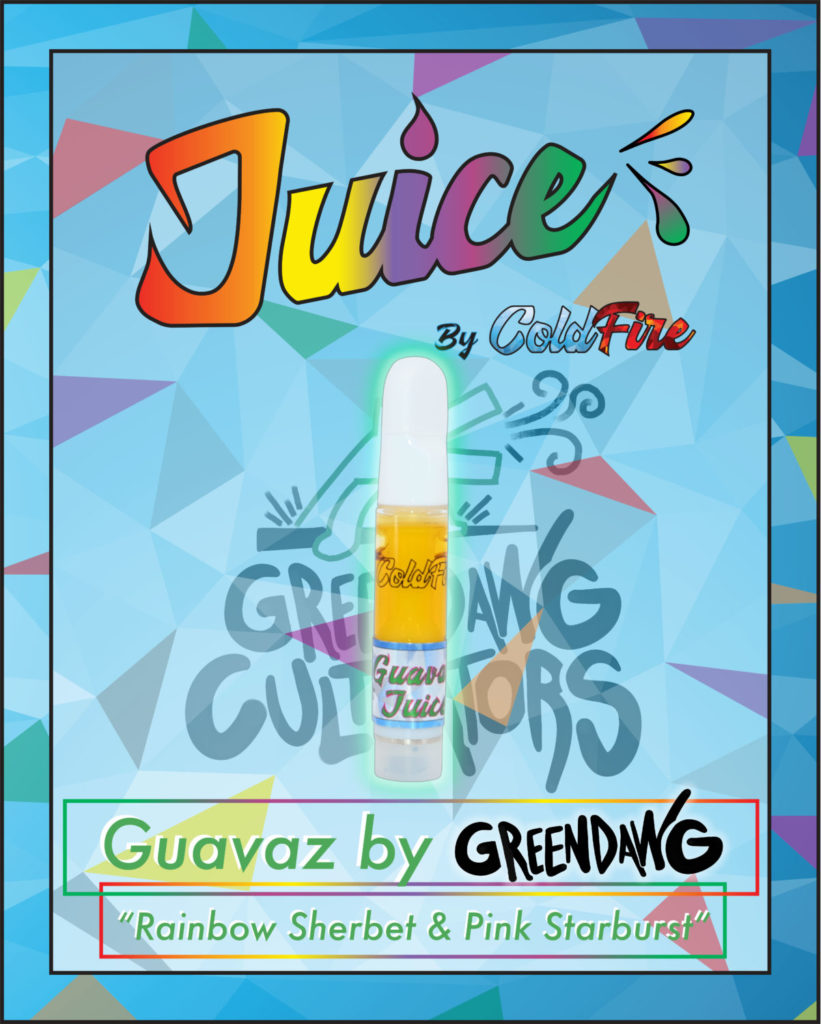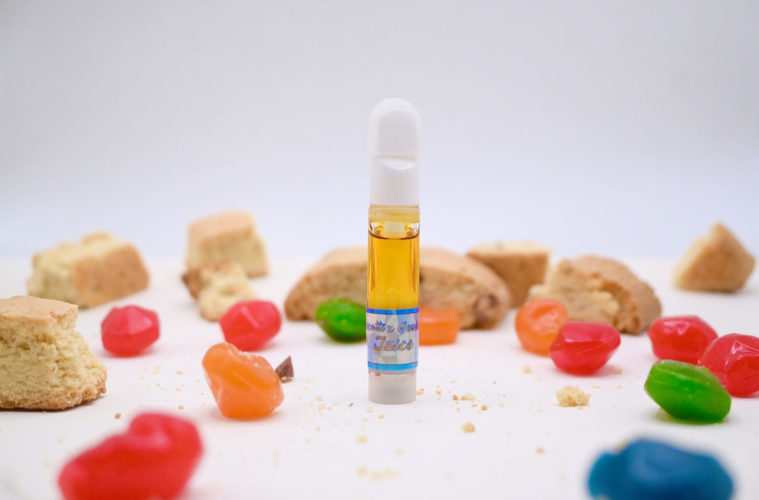We’re a decade into the cartridge revolution in cannabis and one of the fastest emerging concentrate companies in the space is L.A’s own Coldfire Extracts.
Over the last 10 years, most of the companies that got involved in making vape cartridges resembled something out of The Walking Dead. Half of them probably lasted a year. Many more would fade off after a few.
If you need evidence of my claim, look no further than the tests O’Shaunessey’s did with SC Labs back in the day. The list of names that were considered the top of the game back then has dwindled down to a couple of survivors.
But vape cartridges are entry-level hash. So when somebody does it right, it’s important to celebrate it because it’s so much more accessible to the masses than your standard concentrates. Don’t get me wrong, I love terp slurpers and laser thermometers, but they can get tricky to explain to grandma.
Despite all the weirdness of carts, and the underground market scare a couple of years ago, vape carts continue to explode. The now-proven mechanism is here to stay and few people are doing it better than Coldfire Extracts.
We sat down with Coldfire’s founder Nick Coburn. Before you even get to the terps, Coburn is one of those enthusiastic labor-of-love people that thankfully still dot the cannabis industry, albeit not as heavily as he once did. He describes himself as the founder, cult leader and director of operations, in that order, in his email signature,
“It’s kind of a crazy tale where we came from, first of all, Coldfire shouldn’t even really be here,” Coburn told L.A. Weekly. “The way that the world works and just kind of lines the right people up when you got the right vision, and you’re the right type of person.”
Coburn’s tale in extracts dates back well over a decade. He started open blasting butane concentrates around 2008 or 2009; he couldn’t quite put his finger on it. He enjoyed it and saw potential in a move to Colorado after he finished up at West Virginia University in 2013. He’d leave school a year early.
“I had an opportunity to go out and start my own thing with the water hash and edibles, and I really just said you know if I gotta come back to school, come back to school,” Coburn said. “When the world is calling you and you feel like it’s your calling, you follow that bitch, right?”
Coburn described the move as pretty tight and a learning experience. He ended up moving out to Denver. The moves he made in Denver nearly 10 years ago kick-started him to where he’s at now.
“You know, I’d like to say I did something cool with the edibles but, really, back then people just weren’t enjoying headstash-quality edibles,” Coburn said.
While water hash got things going, eventually he started messing around with butane again in Colorado. He started by blasting the light dep-grown pot he grew in his yard and eventually some diamonds he made would help score his next opportunity.
His work would catch the eye of Green Dot Labs, one of Colorado’s premier hash companies to this day. During his time with Green Dot, he’d see how critical genetics were in making a difference. He’s watched them pop hundreds of seeds in search of something truly exotic, and the results kept the lab sitting on top of the market year after year.

The Coldfire Team at The Emerald Cup.
While with Green Dot, the opportunity to nerd out on genetics for a few years was critical.
“So that really helped build my love and passion for these complex cultivars,” Coburn said. “ I got to see what the plant could actually express when you’re a really good grower and you really just care about giving your kids the best environment that they can grow in.”
Through all this, he’d be on the cutting edge of diamond tech in Colorado. As the new hash format hit the scene, it was all the rage. But while the big chunky THC crystals would steal the show, the real key ingredient was the sauce they sat in that provided all the flavor.
“Everyone was just getting super hyped on what those diamonds look like, but at the end of the day, me being a flavor whore, I couldn’t care less what the diamonds look like right?” Coburn said. “I was way more interested in and constantly intrigued by how that terp layer reacted. How it would hold a combination or like the saturation of cannabinoids within itself.“
This was where Coburn first started dabbling in cartridges. Eventually, his work would catch the eye of his California partners. He also was an engineer for Extraction Tech Solutions at that time, making him an even better candidate for anyone looking for a partner with his experience.
He made the move west and Coldfire started in May 2020. After some months of getting everything together, they would do their first badder drop in the fall of 2021. It would still be another eight months until the world was introduced to their Terp Juice, but when it finally hit the market, it changed everything for the company.
The cartridges would quickly pass most of the marketplace in hype levels. One could easily argue the only vape cartridge release of the last 16 months that came close was straight from the Z mountain top with the Original Z’s Zeuz pods. Everything else was left in their dust.
Coburn would speak in depth on what he believes makes the difference in Colefire’s product.
“I don’t want to say I’m OCD or on the growers’ levels, but I understand the passion all the way through,” Coburn said. “I understand what has to go in, in order to give the plant its best expression.”
Coburn argues all he’s doing is really understanding the scientific side. 
He likes to look at it as trying to achieve 100% heath points in the quality of the material. As the old slogan goes in hash production, fire in equals fire out. There are no shortcuts to finding great material to work with when you’re trying to produce the best hash in the world. Many hash companies pull up to farms with freezer trucks to help cultivators pack it for concentrate production.
“Even if someone’s bringing 96% or 97% health points to the table, it’s still a great extract. It’s still a great pen,” Coburn said. “But at the end of the day, if you’re pulling any of that flavor that grower spent eight, nine, 10 weeks in some cases, that’s where I feel like that’s my duty. So the specialness of the juice. There are like four or five different puzzle pieces that ultimately are what is really proprietary about the juice. But ultimately we extract super cold on the front side. And then perfect terpene preservation on the backside.”
Coburn noted they were able to hit 21.3% terpenes on a batch of blow pops from Preferred Gardens.
Even though the market is flooded at levels so brutal that Noah might sink, the fight for the best quality materials for hash production is even worse. Thankfully for Coburn, he can avoid the worst of it in the water extract world and have a wider market to pick from. That being said, that doesn’t mean it’s easy getting material from big names like Blueprint and Green Dawg.
“I have no real ego or pride,” Coburn said. “That’s why what we make is great at the end of the day period because we work and we’re partnered with some of the best legacy growers out there. But when it comes to the carts, it’s in a league of its own. It’s light-years ahead of any other cartridge that’s out there.”
One testament to the hype of Terp Juice is the fact that Coldfire had to stop white labeling as soon as they were released.
“We only white labeled while we had the badder out,” Coburn said. “The first month that we released the juice, we had to stop all white labeling. After the first month we released the juice, we couldn’t even make any more badder because of the demand for the juice. So we have not produced any badder in over a year because we’re still trying to catch up to the juice demand.”
Coldfire has delivered to 150 shops over the last four months. There is currently a four-week wait for dispensaries that want to add their name to the list and the line currently sits at 20. Coburn emphasized how thankful the team is to be in this situation given the current state of California’s cannabis industry.
But part of it is because they’ve kept it as craft as possible. While other labs in their situation might switch to three eight-hour shifts a day in hopes of constantly pumping out the heat, Coldfire is still only four people after all of this success.
“Overall, this is a plan for organic growth. We are three brothers and I. We have no immediate need to go crazy with this, right? The best part of this is the demand and the spiderweb and the natural communication of the customers that happened behind the scenes,” Coburn said.
Advertising disclosure: We may receive compensation for some of the links in our stories. Thank you for supporting LA Weekly and our advertisers.

